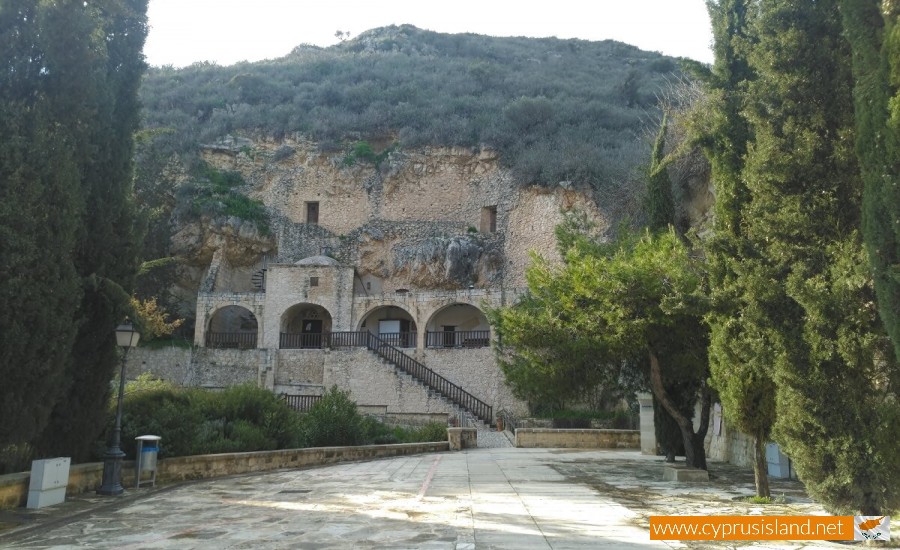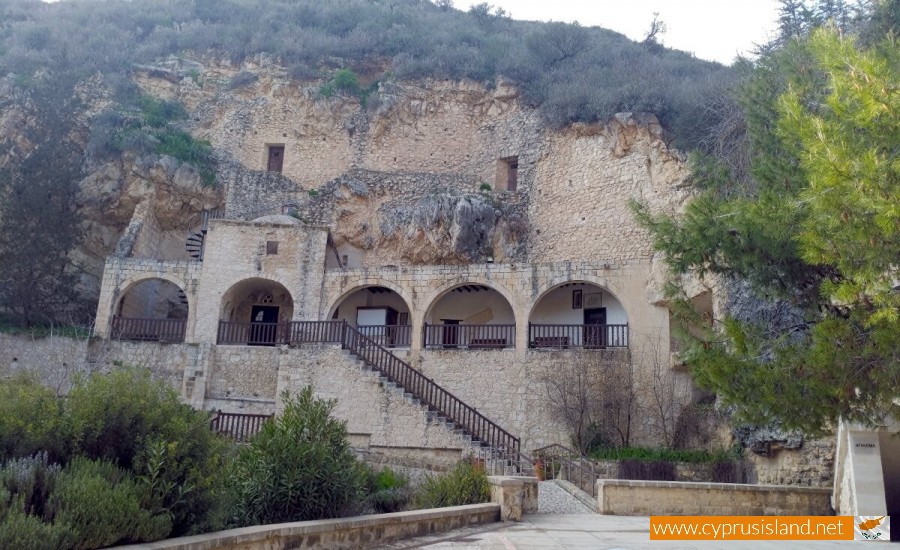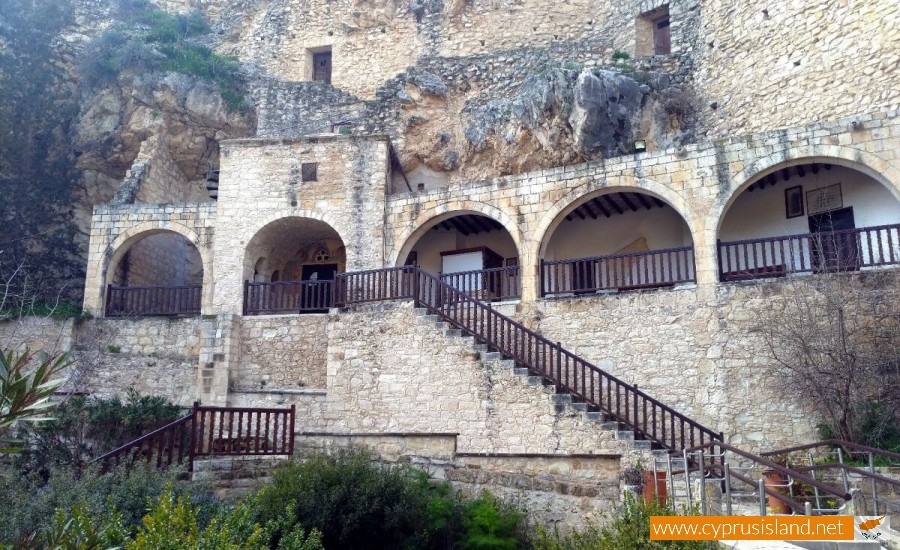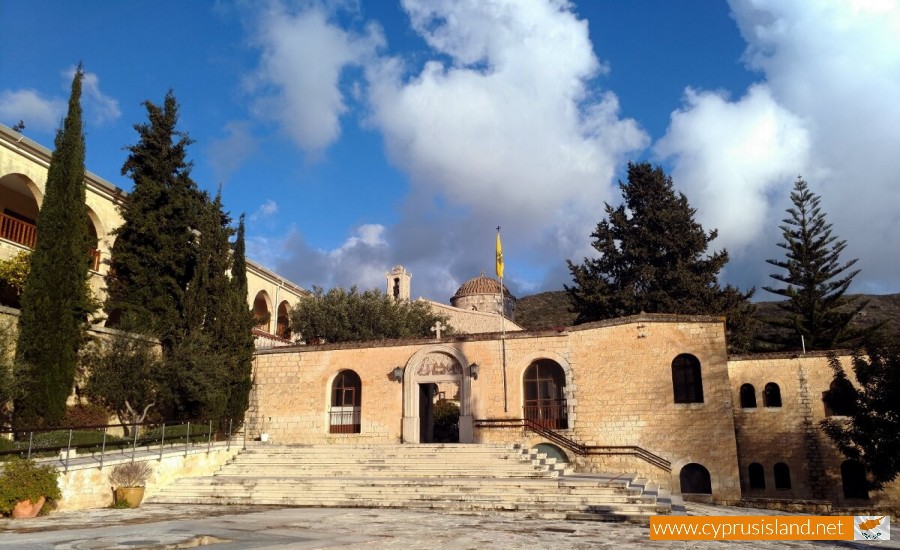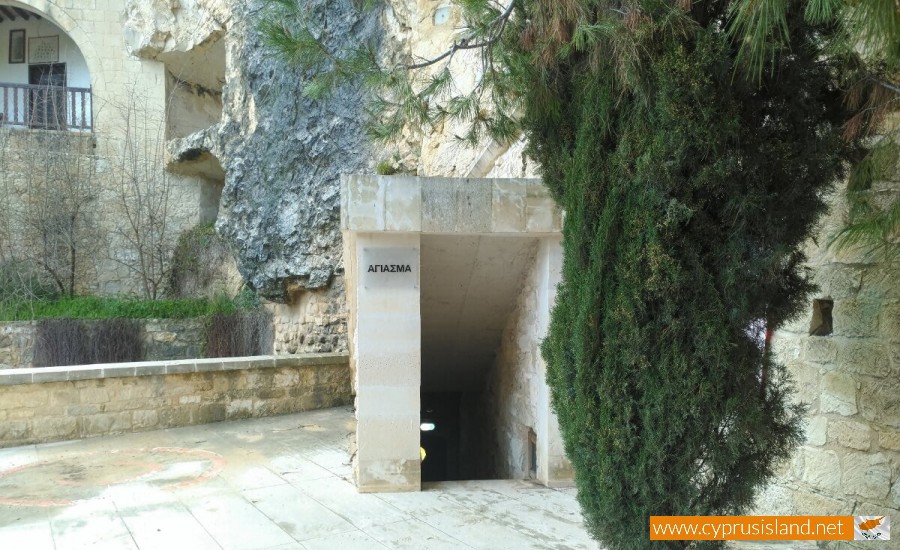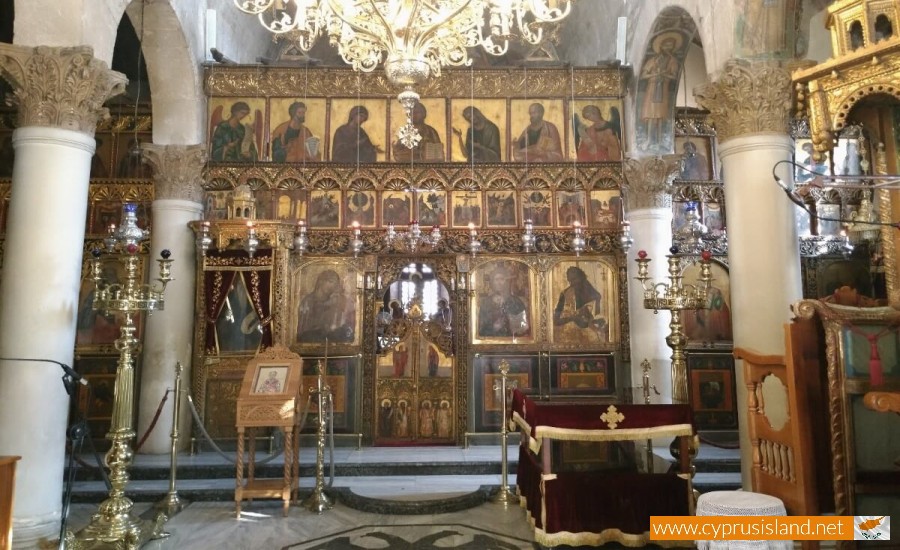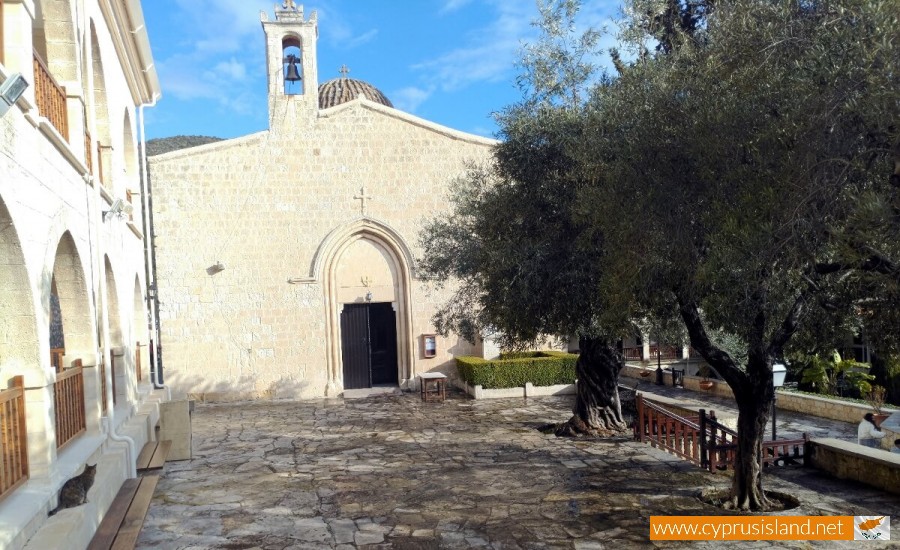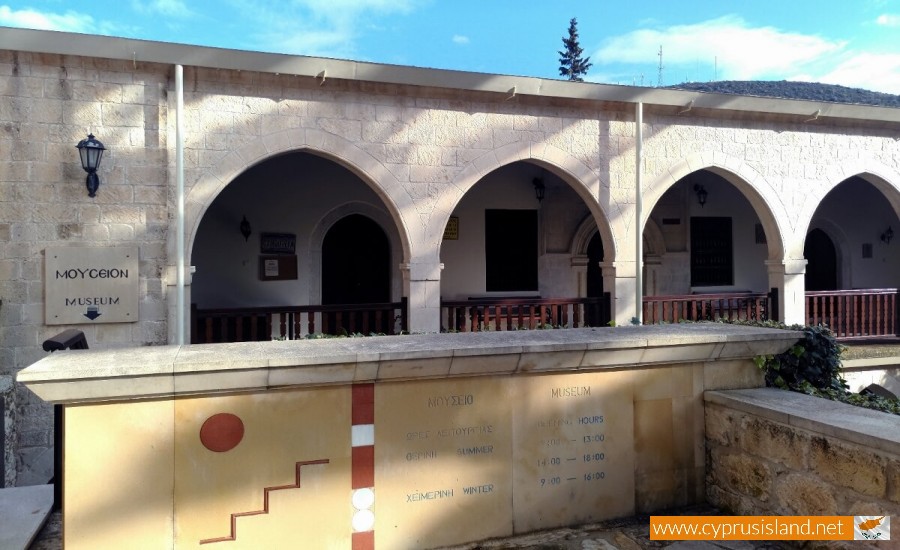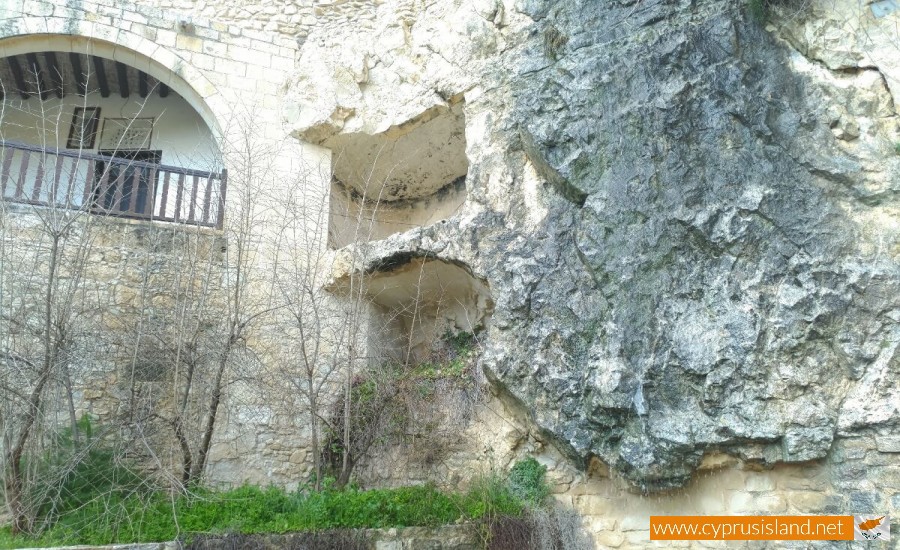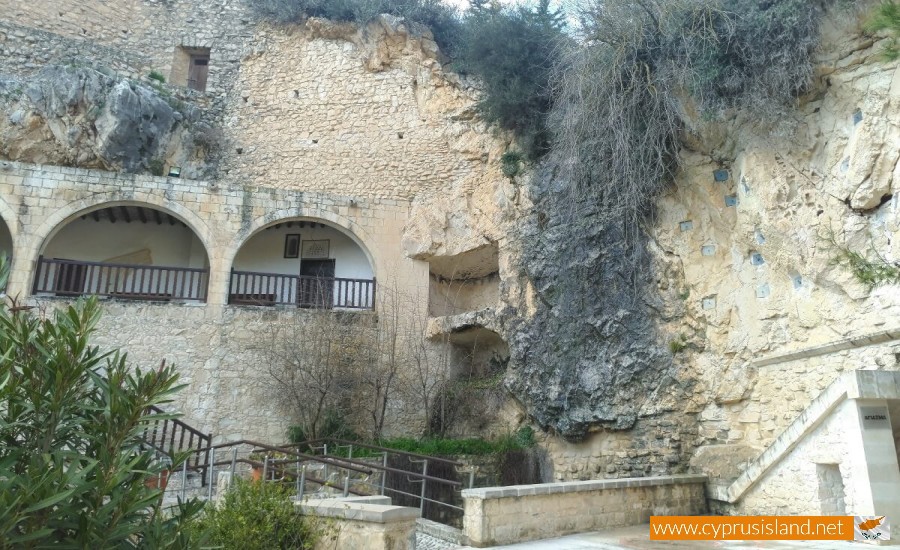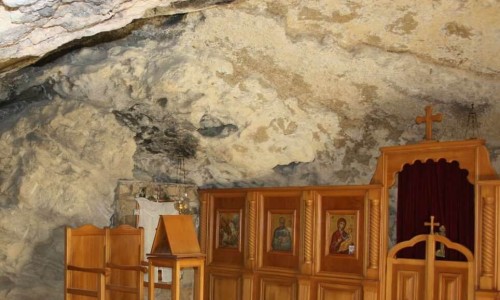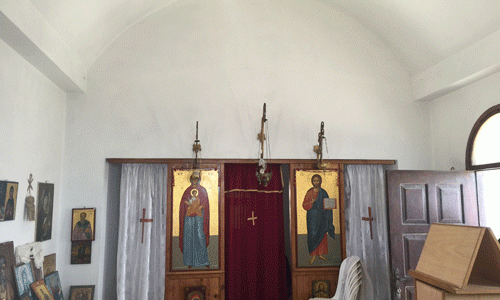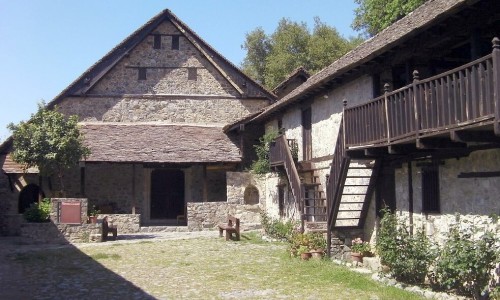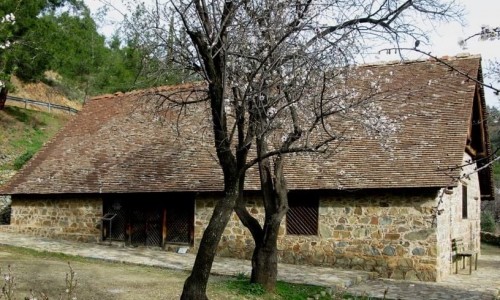Agios Neophytos Monastery, Paphos
Agios Neophytos Monastery is located near the village of Tala, about 10 kilometres north of Paphos, in a peaceful setting surrounded by greenery and forested hillsides. Saint Neophytos originally carved a small chapel here in 1159, forming the foundation of what would become one of Cyprus’ most significant monastic centers. Perched on the slopes of a tranquil valley, the monastery offers sweeping views and a rare window into Byzantine monastic life. The rock-hewn chapel—known as the Enkleistra—later inspired a thriving community, and today visitors come for its serene courtyards, remarkable medieval frescoes, and a small museum that preserves manuscripts, ecclesiastical artefacts, and local heritage.
The Cave of Palaia Englistra
According to tradition, Saint Neophytos also carved another cave-chapel near the village of Souskiou, east of Paphos. This cave, known as Palaia Englistra, contains iconographies dated to the 15th or early 16th century.
Founding of the Enkleistra (Holy Retreat)
Saint Neophytos transformed a natural cave on the site into his sacred refuge, which he called the Enkleistra (meaning "place of seclusion"). He divided it into two sections:
- Chapel of the Holy Cross (Timios Stavros) – a small church carved by the Saint himself.
- Saint’s Living Quarters – including a cell, altar, and the tomb he carved for himself.
The Saint lived here until 1170 when he was ordained a priest by the Bishop of Paphos, Vasilios Kinnamos. His fame grew rapidly, drawing devout monks who established a monastic community under his spiritual guidance.
Expansion & New Structures
Desiring tranquility, Saint Neophytos later carved a new cell higher above the rock, above the original cave. Beside it, he built a small chapel dedicated to Saint John the Baptist (Agios Ioannis Prodromos).
Today, this older chapel along with the original room, altar, and tomb of Saint Neophytos remains one of the most significant features of the monastery. Above the hill lies the newer room and chapel built during his later years.
Byzantine Frescoes & Theodore Apsevdis (1183)
The lower section of the Enkleistra is of great artistic interest, as it preserves much of its original decoration. An inscription notes that the frescoes were completed in 1183 by the Byzantine painter Theodore Apsevdis. The Saint appears in two of the paintings. During the early 13th century, some frescoes were replaced, but several of Theodore's works still survive.
The Main Monastery Church (16th Century)
The existing monastery structures were likely built at the beginning of the 16th century. They include a domed basilica, an arched hall, and various monastic quarters. Although the main church survived over time, many of its frescoes were destroyed between 1585–1611.
Monastery Museum & Cultural Treasures
Today, the monastery is inhabited by a small number of monks and houses a rich museum. The collection includes:
- Handwritten manuscripts and religious texts
- Priestly vestments and holy utensils
- Jewellery and ecclesiastical art
- Historical Cypriot pottery and ancient maps
Every January, the monastery organises a two-day religious fair, where visitors can purchase traditional monastic products, Cypriot crafts, and artwork.
Visitor Information
| Opening Hours: (Open daily) | Winter: 09:00 – 16:00 Summer: 09:00 – 13:00 | 14:00 – 18:00 |
| Entrance: | Free |
Frequently Asked Questions
Is there an entrance fee to visit Agios Neophytos Monastery?
Entrance to the main monastery grounds is free. A small fee may apply to visit the museum and the Saint’s cave (Enkleistra).
What are the opening hours?
The monastery is open daily. Winter hours are 09:00 – 16:00, while summer hours are 09:00 – 13:00 and 14:00 – 18:00.
Can I visit the Saint’s cave (Enkleistra)?
Yes, visitors can access the cave where Saint Neophytos lived and carved his own tomb. Access may require a small entrance fee.
How do I get to the monastery from Paphos?
The monastery is located about 10 km north of Paphos, near Tala village. You can reach it by car, taxi, or as part of a guided tour. Free parking is available.
Is the monastery accessible for visitors with mobility issues?
The main grounds are moderately accessible, but there are steep steps leading to the cave and upper areas, which may not be suitable for everyone.
Are photos allowed inside the monastery?
Photography is allowed in the outdoor areas. Some interior spaces, such as the cave and church, may prohibit flash or photography altogether — signs will indicate this.
Is there anything special to experience during certain times of the year?
Yes, the monastery hosts a popular two-day religious fair every January, featuring Cypriot crafts, artwork, and monastic products.


